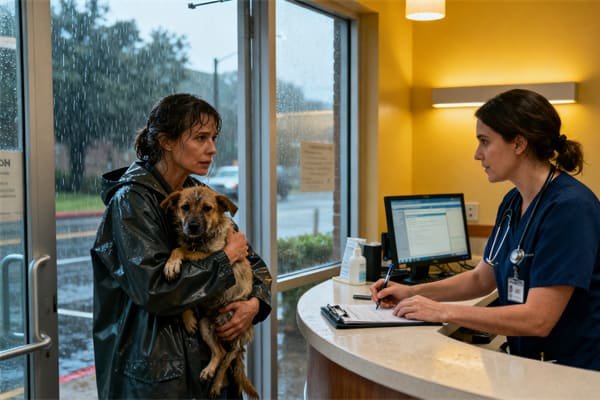I’ve seen too many pet owners face heart-wrenching decisions between their pet’s health and their savings. This reality changed my perspective on pet insurance[^1].
Pet insurance works like health insurance for pets, reimbursing you for covered veterinary expenses. Most policies cover accidents and illnesses, with optional wellness coverage available. You typically pay the vet upfront, then submit claims for reimbursement.

Let me share insights from years of helping pet owners navigate insurance decisions and claims processes.
Is Pet Insurance a Good Investment?
Every week, I help families make this crucial decision for their beloved pets.
Pet insurance is a worthwhile investment for most pet owners, especially for young pets or breeds prone to health issues. While it may not save money on routine care, it provides crucial financial protection against unexpected medical expenses.

Let’s examine the value proposition:
Cost-Benefit Analysis
-
Financial Considerations
- Monthly premiums
- Deductible options
- Reimbursement rates
- Coverage limits
- Lifetime benefits
-
Coverage Benefits
- Accident protection
- Illness coverage
- Emergency care
- Surgery costs
- Medication expenses
Return on Investment
| Scenario | Without Insurance | With Insurance |
|---|---|---|
| Routine Care | $300-500/year | Similar + Premium |
| Minor Emergency | $800-1,500 | 70-90% Covered |
| Major Surgery | $3,000-8,000 | 70-90% Covered |
| Chronic Condition | $1,000+/year | Mostly Covered |
What Are the Downsides of Pet Insurance?
I believe in transparent discussions about both benefits and limitations.
The main downsides of pet insurance include waiting periods before coverage begins, exclusions for pre-existing conditions, and the need to pay vet bills upfront before reimbursement. Some policies also have age restrictions and breed-specific limitations.

Let’s explore the challenges:
Common Limitations
-
Policy Restrictions
- Pre-existing conditions
- Breed exclusions
- Age limits
- Waiting periods
- Coverage caps
-
Financial Considerations
- Premium increases
- Deductible payments
- Upfront costs
- Claim processing
- Coverage denials
Limitation Impact
| Aspect | Challenge | Mitigation |
|---|---|---|
| Pre-existing | Not covered | Early enrollment |
| Age Limits | Higher costs | Start young |
| Claims | Upfront payment | Emergency fund |
| Premiums | Annual increases | Lock-in options |
Is It Better to Have Pet Insurance or Save Money?
This question comes up in almost every consultation I have with pet owners.
Having both pet insurance and savings is ideal. Insurance protects against major unexpected expenses, while savings cover routine care and deductibles. The choice depends on your financial situation and risk tolerance.

Let’s analyze both approaches:
Financial Strategy Comparison
-
Insurance Benefits
- Catastrophic coverage
- Predictable costs
- Peace of mind
- Comprehensive care
- No savings depletion
-
Savings Benefits
- No monthly premiums
- Full control
- No claim hassles
- Flexible spending
- Interest earning
Decision Matrix
| Factor | Insurance | Savings |
|---|---|---|
| Major Events | Protected | Risk of depletion |
| Monthly Cost | Fixed premium | Optional deposits |
| Accessibility | Claims process | Immediate |
| Growth | No investment | Interest earning |
How Do Vets Feel About Pet Insurance?
My regular interactions with veterinarians have revealed consistent perspectives.
Most veterinarians strongly support pet insurance because it allows them to provide the best possible care without financial constraints. They see fewer economic euthanasia cases and better treatment compliance in insured pets.

Let’s explore their viewpoint:
Veterinary Insights
-
Clinical Benefits
- Better treatment options
- Earlier intervention
- Preventive care
- Specialist referrals
- Advanced diagnostics
-
Practice Impact
- Reduced financial discussions
- Better compliance
- Fewer payment plans
- Improved outcomes
- Enhanced client relations
Professional Perspective
| Aspect | Impact | Outcome |
|---|---|---|
| Treatment | More options | Better care |
| Client Relations | Less stress | Better experience |
| Outcomes | Better compliance | Healthier pets |
| Practice | Fewer limitations | Advanced medicine |
Conclusion
Pet insurance is worth considering for most pet owners, especially when started early. While it has limitations, the protection against major medical expenses often outweighs the downsides.
---
[^1]: Understanding pet insurance is crucial for making informed decisions about your pet's health and finances.


